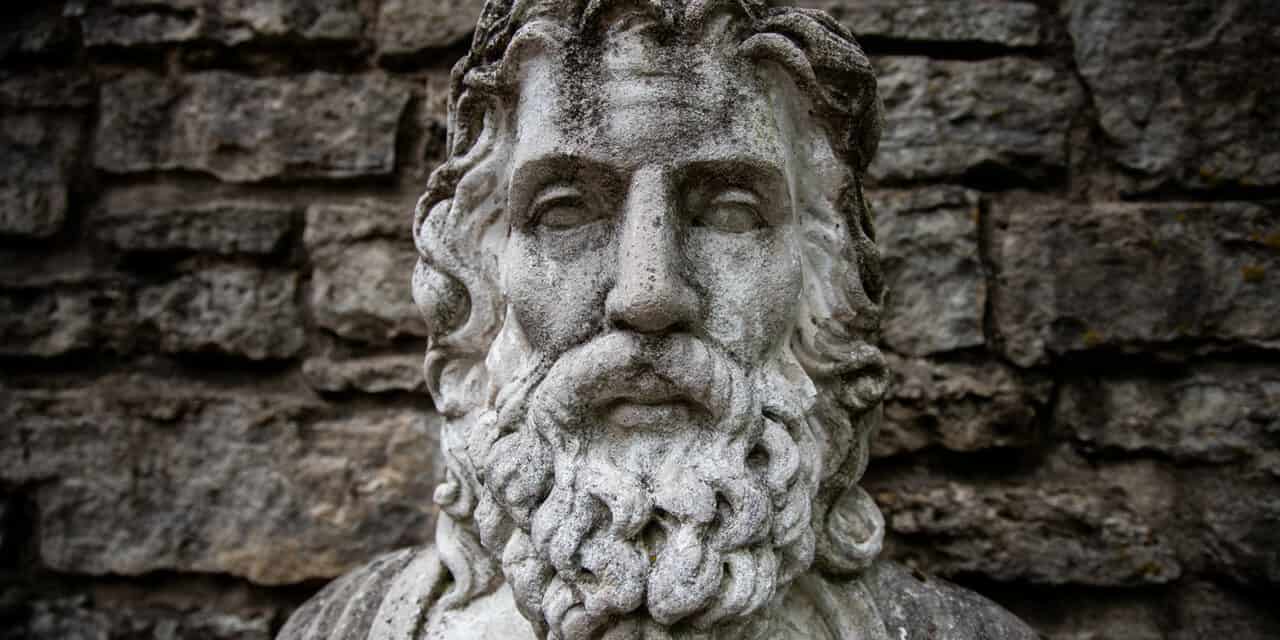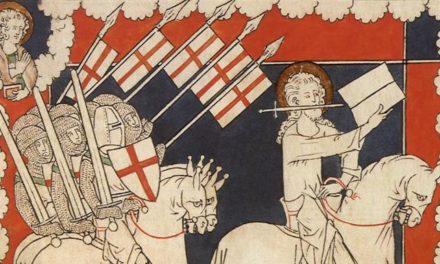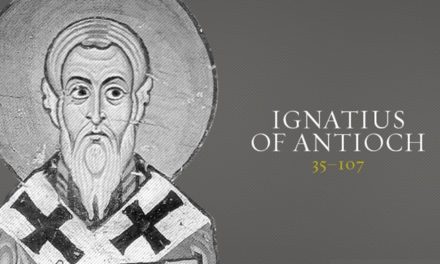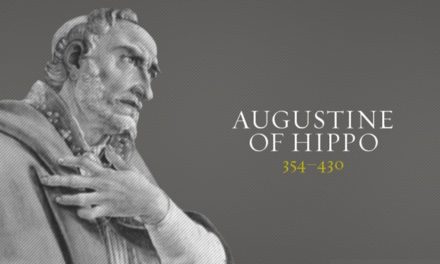In this episode, we’ll take a brief look at what came to be called Spiritualism.
Coming out of the 16th C, the, what seemed to many at the time,
- endless debates on doctrine and dogma,
- the intolerance of Christians toward one another,
- and the lack of any apparent movement toward resolving the mess,
moved many across Europe and the New World to seek refuge in more of an abstract religious sentiment than a rigid faith of set doctrines. Another factor encouraging this mindset was a burgeoning European middle-class. You see, it was only the wealthy nobility who possessed the resources for higher education need to foster an excessive emphasis on correct doctrine. Those who didn’t have that opportunity; who couldn’t wax eloquent on complicated matters of theology, were regarded as unsophisticates who depended on their betters to tell them what to believe.
The Spiritualist Movement of the 17th and 18th Cs attracted people from all classes. From the cultured who’d tired of narrow-minded dogmatism, to uneducated commoners tired of having their lives turned over by endless religious tussles.
The history of the Spiritualist movement is difficult to trace because it devolved into several streams that constantly mixed. Just as its beliefs were a hodge-podge, so is its history. We’ll examine it by taking a look at three of its leaders.
Jakob Boehme was born in Silesia, Germany in 1575. His parents were strict Lutherans of humble means. By all accounts, the young Jakob had a real and rich faith.
The sermons of that time were long dissertations on the theological debates of the day. These bored Jakob to tears and did nothing to spark a relationship with God.
At fourteen, he was apprenticed to a shoe-maker. Shortly after, he began having visions. It might have been one thing if he’d kept these to himself, but he didn’t; he shared them. His master threw him out, saying he wanted an apprentice, not a prophet.
Boehme became a traveling cobbler, moving here and there mending shoes. As he traveled and visited different churches, he came to the conclusion Church leaders had built a kind of confusing doctrinal Tower of Babel. He determined to set dogmatics aside and cultivate his inner spiritual life. He read everything he could lay his hands on that might help in that pursuit.
His meditations led him to some conclusions on the nature of the world and man’s place in it. These were then “confirmed” by visions and other spiritual experiences. But he kept his new-found convictions to himself for a time as he plied his shoe-mending-trade.
At twenty-five, Jakob ended his wanderings and set up shop in Goerlitz, on the border between Germany and Poland, where he made a comfortable living as a cobbler.
Although Boehme didn’t see himself as a preacher, he was convinced God wanted him to record his visions. The result was a book titled Brilliant Dawn. In it, Boehme repeatedly asserts he’s writing what God dictated word for word, and that he’s no more than a pen in His hand. Boehme didn’t publish, but a manuscript reached a local pastor, who accused Boehme to the magistrates. Under threat of exile, Boehme promised to teach or write no more on religious matters. For five years he kept his promise. But in 1618, compelled by new visions and the encouragement of admirers, he wrote anew. Without permission, one of his followers published three of his works. These reached the same pastor, who again accused Boehme of heresy. He was forced to leave Goerlitz.
He ended up in the court of the Elector of Saxony, where several theologians examined his teachings without reaching a conclusion. They confessed themselves unable to understand his meaning. They recommended Boehme be given time to clarify his ideas. Not long after, he fell ill and returned to Goerlitz to die among friends and followers. He passed at the age of fifty.
The Saxony theologians’ response wasn’t just a dodge to avoid passing judgment on a likable guy. Boehme’s writings continue to be difficult to sort out. They’re a confusing mish-mash of this and that; which, to be frank, is a hallmark of much of what goes under the title “spiritualism.” Boehme’s tomes are a mixture of traditional Christian themes with others taken from magic, alchemy, occultism, and theosophy. At points, it looks like Boehme gives a metaphor to help explain his point, but it never does. You read it and say, “What does THAT have to do with anything?” So the metaphors, striking as they may be, only serve to add to the confusion. And THAT may very well be the overall point of his inkings. There may not BE a meaning to be parsed from it all. There’s every possibility Boehme used words to produce phrases that conveyed singular ideas that weren’t connected. He may have aimed for a state of mind that suspended rationality and logic; one that arises out of frustration at trying to make sense of what is senseless, so one gives up, lays reason down, and becomes hyper-suggestible.
While the specifics of what Boehme aimed for aren’t clear, their basic direction is. He took aim at the lifeless dogmatism of theologians and the empty liturgy of the Church. Against these, Boehme exalted the freedom of the spirit with a belief in direct revelation from God to individuals. He declared that since “the letter kills,” believers ought not to be guided by Scripture, but by the Holy Spirit, who inspired the biblical writers and presently inspires believers. He said, “I have enough with the book that I am. If I have within me the Spirit of Christ, the entire Bible is in me. Why would I wish for more books? Why discuss what is outside, while not having learned what is within me?”
Huh – ironic then that he wrote books.
Boehme had few followers during his lifetime but later his writings gained admirers. In England, some formed a Boehmenist-movement. Some clashed with the Quakers who we’ll take a look at next. So, the Spiritualist Movement, born in part as a protest against the doctrinal debates of traditional theology, was eventually embroiled in similar controversies.
George Fox was born in a small English village the same year Jakob Boehme died, 1624. Like Boehme, Fox was of humble origin and a cobbler’s apprentice. At 19, disgusted at the immorality of his fellow apprentices, he quit and began the life of an itinerant religious seeker. He attended meetings of all sorts, seeking spiritual illumination. He devoted himself to the study of Scripture until he’d committed most of it to memory.
Fox’s pursuit of spiritual illumination was a roller coaster of highs and lows. There were times when he had a mystical experience that thrilled, followed by a season where he despaired of finding the path that would lead to what he sought. He came to the conviction all the various sects in England were wrong, and their worship was an abomination to God.
Fox challenged much of traditional Christianity. He reasoned if God doesn’t dwell in houses made by human hands, as the Scripture said, how dare anyone call buildings where they gather “churches”? They are in truth no more than houses with bell towers.
For Fox, pastors paid a salary aren’t real shepherds, but “priests” and “journeymen.” Hymns, orders of worship, sermons, sacraments, creeds, ministers—are all human hindrances to the freedom of the Spirit.
Over against all these, Fox placed what he called the “inner light.” This was a seed that existed in all people, and was the true way to find God. Fox said the Calvinist doctrine of total depravity was a denial of God’s love. On the contrary, he maintained, there’s an inner light in all, no matter how dim it may be. Thanks to that light, pagans can be saved as well as Christians. This light, however, must not be confused with the intellect or conscience. It’s the capability all have to recognize and accept the presence of God. By it we’re able to believe and understand Scripture. So, communication with God thru the inner light is previous to and independent of, any communication by external means.
Although those close to George Fox knew of the fire burning within him, for several years he abstained from proclaiming what he was convinced he’d discovered regarding the true meaning of faith and Christianity.
At that time there were in England several religious sects, and Fox attended all without finding contentment in any. Finally, he felt called to speak out at a Baptist meeting, announcing what he now believed. From that point on, such urgings became more frequent. In gatherings of various religious groups, Fox declared he’d been commanded by the Spirit to announce his new vision of The Faith. He was often treated with contempt and hostility and was thrown out of meetings, beaten, and stoned. But all such didn’t stop him. Soon he was in another “house with a belfry,” interrupting the service and proclaiming his message.
Fox’s followers grew rapidly. At first they called themselves “Children of Light” but Fox preferred the title Friends, which later become their official name. They were soon called Quakers by outsiders. The name came from their tendency to tremble with fervency as they prayed.
In 1652, George Fox gained the support of Margaret Fell, a noble-woman widowed in 1658. She became a leader in the movement and used her position to lend it an air of credibility and protection. But political opposition grew and she was arrested for supporting the movement. Her property was confiscated and she was sentenced to life in prison. After being released by the king, she married Fox in 1669. The rest of their lives were spent teaching and in missions, which were repeatedly interrupted by rounds of imprisonment. Fox died in 1691, his wife Margaret a decade later.
Since the Friends believed structure in worship was an obstacle to the Spirit, their services took place in silence. Any who felt called to speak or pray aloud were free to do so. When the Spirit moved them, women had the same right to speak as men. Fox himself did not prepare a message but simply allowed the Spirit to move him in the moment. There were times when many gathered, hoping to hear him speak, but he refused. Also, Quakers didn’t include the traditional sacraments of baptism and communion. They feared that physical water, bread, and wine would draw attention away from the spiritual.
Fox was aware of the danger his emphasis on the freedom of the Spirit might lead to excessive individualism. Other movements with a similar emphasis hadn’t lasted long. The exercise of individual freedom inevitably leads to the dissolving of a group. Fox avoided this by underscoring the importance of community and love. In Friends’ meetings, decisions aren’t made by a majority. If a unanimous agreement was not reached, the decision was postponed, and the meeting continued in silence until the Spirit offered a solution. If one was not received, the matter was left pending for another occasion.
Many disliked the teachings and practices of the Quakers. Religious leaders resented the way they interrupted their services to preach or read Scripture. Authorities saw the need to teach a lesson to these Friends, who refused to pay tithes, swear oaths, bow to their “betters,” or uncover their head before any but God. Quakers argued that, since God was addressed in the familiar “Thou,” no one else ought to be addressed by the more respectful “You.” To those used to the submission of their “inferiors,” that was intolerable insubordination.
So Fox was repeatedly beaten and spent years in prison. He was sent to prison the first time for interrupting a preacher who declared the ultimate truth was to be found in Scripture. Fox said that wasn’t true; the ultimate truth was in the Spirit who inspired Scripture. On other occasions, he was accused of blasphemy and of conspiring against the government. When the authorities offered a pardon, he refused, declaring he wasn’t guilty. To accept a pardon for something he hadn’t done was to lie. On another occasion, when serving six months for blasphemy, he was offered freedom in exchange for service in the Army. He refused, declaring Christians ought not use weapons other than those the Spirit provided. His sentence was prolonged by an additional six months.
When he wasn’t in prison, Fox spent his time in Margaret’s home, Swarthmoor Hall. It became the headquarters of the Friends. The rest of the time he traveled England and abroad, visiting Quaker meetings and taking his message to new areas. First, he went to Scotland, where he was accused of sedition; then to Ireland. He spent two years in the Caribbean and North America; and made two visits to the Continent. In all these places he gained converts, and by the time of his death, in 1691, his followers ran to the tens of thousands.
Like Fox, they were persecuted. They were thrown in jail for vagrancy, blasphemy, inciting riots, and refusing to pay tithes. In 1664, Charles II issued an edict forbidding unlicensed religious assemblies. Many groups continued gathering in secret. But the Quakers declared it would be a lie to do so, and openly disobeyed the edict. Thousands were imprisoned, and by the time religious tolerance was granted in 1689, hundreds had died in prison.
The most famous of Fox’s followers was William Penn, after whom the state of Pennsylvania was named. His father was a British admiral who tried to secure for him the best education available. While he was a student, William became a Puritan. Then, while studying in France, he came under the influence of the Huguenots. In 1667, back in England, he became a Quaker. His father, not knowing what to do with his “fanatical” son, threw him out of the house. Penn stayed true to his convictions and eventually spent seven months in the Tower of London. He sent word to the king that the Tower was the worst of arguments to convince him, so, no matter who was right, whoever uses force to seek religious assent is necessarily wrong. Finally, thanks to the intervention of his father and other well-placed friends, he was set free. He then spent several years raising a family, traveling throughout Europe, and writing in defense of the Friends.
Penn then conceived the idea of what he called his “holy experiment.” Some friends had spoken to him about New Jersey, in North America. The crown owed Penn’s father a considerable amount of money. When William’s father died, that debt fell to the son. Since Charles wasn’t able to pay, Penn asked instead for a grant of land in the New World. It became known as Penns’ Wood – Pennsylvania. His purpose was to found a new colony in which there would be complete religious freedom. By then, other British colonies had been founded in North America. But, with the exception of Rhode Island, all were marked by religious intolerance. In Massachusetts, the most intolerant of the colonies, Quakers were persecuted, condemned to exile, mutilated, and executed. What Penn now proposed was a new colony in which all would be free to worship according to their own convictions. This seemed bad enough to an intolerant age. But even worse was Penn’s plan to buy from the Indians the land that the crown had granted him. He was convinced that the Indians, and not the crown, were the legitimate owners of the land. And he hoped to establish such cordial relations with them that the settlers would have no need to defend themselves by force of arms. The capital of this holy experiment would be called Philadelphia—the city of fraternal love.
No matter how ill-conceived Penn’s experiment seemed to the more enlightened Brits, soon there were many, not only in England, but also in other parts of Europe, willing to take part in it. Many of them were Quakers, and therefore the Friends dominated the political life of the colony for some time. But there were also settlers of many different persuasions. Under the leadership of Penn, first governor of the colony, relations with the Indians were excellent, and for a long time his dream of a peaceful settlement was a reality.
The last Spiritualist we’ll look at today is Emanuel Swedenborg.
Born in 1688, three years before Fox’s death, Emmanuel Swedenborg was born to an aristocratic family in Sweden. He received an education at the University of Uppsala, and spent five years traveling England, the Netherlands, France, and Germany. The goal of these travels was the quest for knowledge. While Fox and Boehme pursued religious enlightenment, the young Swedenborg was after scientific knowledge.
After many years of scientific inquiry, Swedenborg claimed he had a vision of being carried into the spiritual world where saw eternal truths. He wrote expansively on the true meaning of reality and Scripture. He said that all that exists is a reflection of the attributes of God. Therefore, the visible world “corresponds” with the invisible one. The same is true of Scripture, which reflects truths that can only be known by those who’ve entered the spiritual world.
Swedenborg was convinced his writings would form the beginning of a new era in the history of the world and religion. He claimed what had taken place when he received his revelations was what the Bible meant when speaking of the 2nd Coming of Christ. As expected, these ideas weren’t received well by his contemporaries. His circle of followers was small. He didn’t feel called to found a new movement, but to call the existing church to a new understanding of its nature and message.
Since that didn’t work out so well, in 1784, twelve years after his death, his disciples founded the Church of the New Jerusalem, whose members were never many but which has survived to our time. In the 19th C, the Swedenborgian Society was founded with the purpose of publishing and distributing Swedenborg’s writings.





